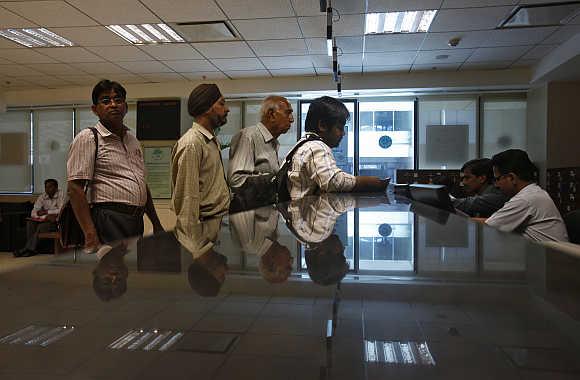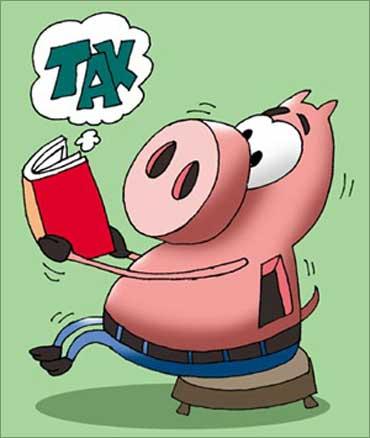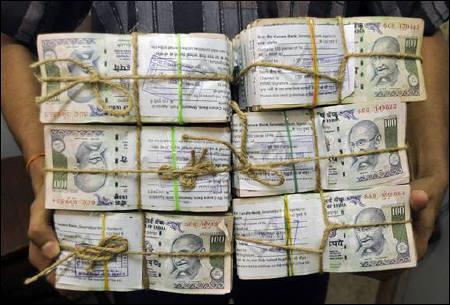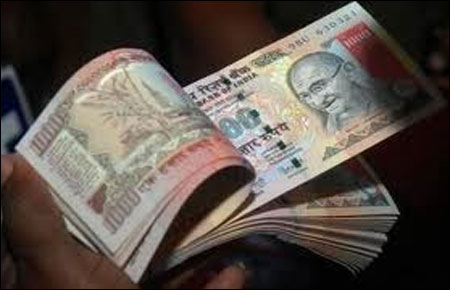 | « Back to article | Print this article |
Budget must address anomalies in Income Tax laws
It is not just about archaic limits, there are a number holes which, if plugged, will come to the aid of taxpayers, rues Neha Pandey Deoras
“If your employer’s private provident fund trust hasn’t yet secured an exemption certificate from the labour ministry or the Employees’ Provident Fund Organisation, you might not get income tax exemption for contribution towards the fund, under Section 80C,” says Kuldip Kumar, executive director and partner, PricewaterhouseCoopers.
Withdrawals from such trusts, too, will be taxable; withdrawals from exempted trusts are fully exempt.
Similarly, those retiring from a company whose PF trust does not have tax exemption might have to pay tax on the corpus.
In August 2013, the EPFO had asked about 300 private PF trusts to send their pending tax exemption proposals by November.
However, many of these haven’t yet secured exemption.
Please click NEXT to read further. . .
Please click here for the Complete Coverage of Budget 2014 -15
Budget must address anomalies in Income Tax laws
As the Finance Act wasn’t amended in February this year, the extension expired on March 31.
Suresh Surana, founder of tax advisory firm RSM Astute Consulting, says tax exemption for leave travel allowance should be provided for a block of four years.
Currently, tax exemption for LTA is allowed for two years, in a block of four calendar years.
“This is at a time when the Income Tax Act follows the concept of ‘financial year’.
“Now, even the Companies Act considers financial years, not calendar years.
"It will help stick to one standard definition of a year,” says Surana.
The current block of four years is January 1, 2014, to December 31, 2017.
Please click NEXT to read further. . .
Please click here for the Complete Coverage of Budget 2014 -15
Budget must address anomalies in Income Tax laws
The concept of a ‘calendar year’ was used in Section 10 (5), at a time when there was no uniform definition of ‘previous year’.
It has been more than two decades since the uniform ‘previous year’ was introduced as April to March.
However, there has been no amendment in this regard, Surana adds.
This isn’t the only anomaly in income tax laws. Gautam Nayak, partner of CNK & Associates, says, “A house buyer gets exemption of up to Rs 150,000 for interest repayment towards a home loan for his first house.
“However, he gets unlimited exemption from interest repayment for a loan for a second house (or beyond).
Please click NEXT to read further. . .
Please click here for the Complete Coverage of Budget 2014 -15
Budget must address anomalies in Income Tax laws
“This, in a way, disincentivises the first purchase. Not every one can afford a second house.”
But if a house property (first or second) is let out, the unlimited tax exemption is available for interest repayment towards a home loan for the house.
Redevelopment of properties is common, at least in metros.
Sometimes the I-T department says redeveloped properties are akin to new properties, as you surrender a property and get a new one, with extra FSI (floor space index).
While the property owner might say he has reinvested in an existing property, I-T official may consider redevelopment to be a deemed sale and purchase of property.
Please click NEXT to read further. . .
Please click here for the Complete Coverage of Budget 2014 -15
Budget must address anomalies in Income Tax laws
At the same time, there is extra income by way of rentals till the time one’s property is redeveloped.
Section 50 (C) might only add to woes.
According to this section, if a house is sold at a price lower than the stamp duty in the state, the minimum valuation of a property will be considered to be at least the same as the stamp duty value.
Under the I-Tax Act, e-filing of tax returns is compulsory in the case of certain taxpayers, like those whose total annual income exceeds Rs 500,000.
“Though there are a lot of benefits associated with filing returns online, the biggest disadvantage is taxpayers have to follow a set pattern in the online returns form.
Please click NEXT to read further. . .
Please click here for the Complete Coverage of Budget 2014 -15
Budget must address anomalies in Income Tax laws
“Thus, they are unable to put forth their view or position (by way of a note) for seeking exemption on a certain income or transaction.
“This could result in severe penalties -- three times the tax involved,” says Surana.
For instance, one could seek tax exemption on proceeds from the sale of a house by investing in capital gains bonds, qualified under Section 54 (EC).
Now, the law seeks investment of up to Rs 50 lakh (Rs 5 million) in these bonds each financial year.
So, if one sells a house in January 2015, he/she can invest Rs 50 lakh by March 2015 and another Rs 50 lakh in April 2015.
Please click NEXT to read further. . .
Please click here for the Complete Coverage of Budget 2014 -15
Budget must address anomalies in Income Tax laws
Many judgments have interpreted the law in a similar way, though many assessing officers tend to disagree.
But the e-filing form does not provide taxpayers any space to explain this stand and avoid a penalty.
Nayak says in the US, mutual fund schemes clearly state the instruments they invest in.
And, tax on the returns from these products are aligned.
But that is not the case in India.
“For instance, debt mutual fund schemes invest in interest-bearing instruments (money market instruments).
Please click NEXT to read further. . .
Please click here for the Complete Coverage of Budget 2014 -15
Budget must address anomalies in Income Tax laws
“By that account, returns on these products should be interest income.
“But those who invest in the growth option of debt funds are taxed on the returns as capital gains,” he says.
At the same time, investors in the dividend option will be levied tax for interest income (at the slab rate).
“Under Section 17(2), the employer’s contribution to the superannuation fund is tax-exempt at the hands of employees -- only up to Rs 1 lakh.
Any contribution over this amount is taxed as a perquisite at the hands of the employee,” says Kumar. The cap of Rs 1 lakh was introduced in the fringe benefit tax regime but then the employer was taxed for contributions of more than Rs 1 lakh.
Please click NEXT to read further. . .
Please click here for the Complete Coverage of Budget 2014 -15
Budget must address anomalies in Income Tax laws
He adds there are two types of tax treatments meted to employees when one owns a car and when one is provided a car.
“Irrespective of the amount a company spends on the maintenance of a car provided to its employee, the employee is taxed at Rs 1,800 or Rs 2,400 per cubic cc a month when he uses employer provided car. But when an employee seeks reimbursement for a car he owns and uses for professional and personal reasons, the value of perquisite is the amount spent by the employee on maintenance, less Rs 2,400 or Rs 1,800 (as applicable),” says Kumar.
Recurring alimony (paid every month) is taxed twice.
If a person pays alimony, it is from his/her income/salary, which is anyway taxed at the hands of the earner.
Please click NEXT to read further. . .
Please click here for the Complete Coverage of Budget 2014 -15
Budget must address anomalies in Income Tax laws
But the spouse who receives the alimony also has to pay tax on it, as it is considered to be income at the hands of the receiver, says Nayak.
However, a lump-sum alimony is not taxable at the hands of the receiver.
Under I-T tax laws, gifts received from relatives are tax-exempt.
But are gifts received by an HUF (Hindu Undivided Family) from the relatives of its members or those of the karta considered gifts received from relatives?
“There are two views: First, an HUF is an abstract entity and it cannot have any relatives; therefore, gifts received from the relatives of the karta/members will be taxable at the hands of an HUF.
“Second, an HUF is only a group of family members and their relatives can be considered relatives of the HUF.
“Therefore, gifts received from the relatives of the karta/members should be exempt from tax,” says Vaibhav Sankla, director at tax consultancy H&R Block.
Please click NEXT to read further. . .
Please click here for the Complete Coverage of Budget 2014 -15
Budget must address anomalies in Income Tax laws
COMPLICATED TAX NORMS
- The I-T Act follows the concept of financial year for exemptions but for LTA, it follows calendar year
- Exemption for interest repayment for the first home loan is Rs 1.5 lakh but it is unlimited for the second house
- There is no limit for claiming tax benefits for interest repayment for a let-out property
- Redeveloped properties can be considered a new property
- No clarity on whether only up to Rs 50 lakh can be invested in 54 (EC) bonds or can one invest more
- Returns from growth option of debt funds are considered
Please click here for the Complete Coverage of Budget 2014 -15











